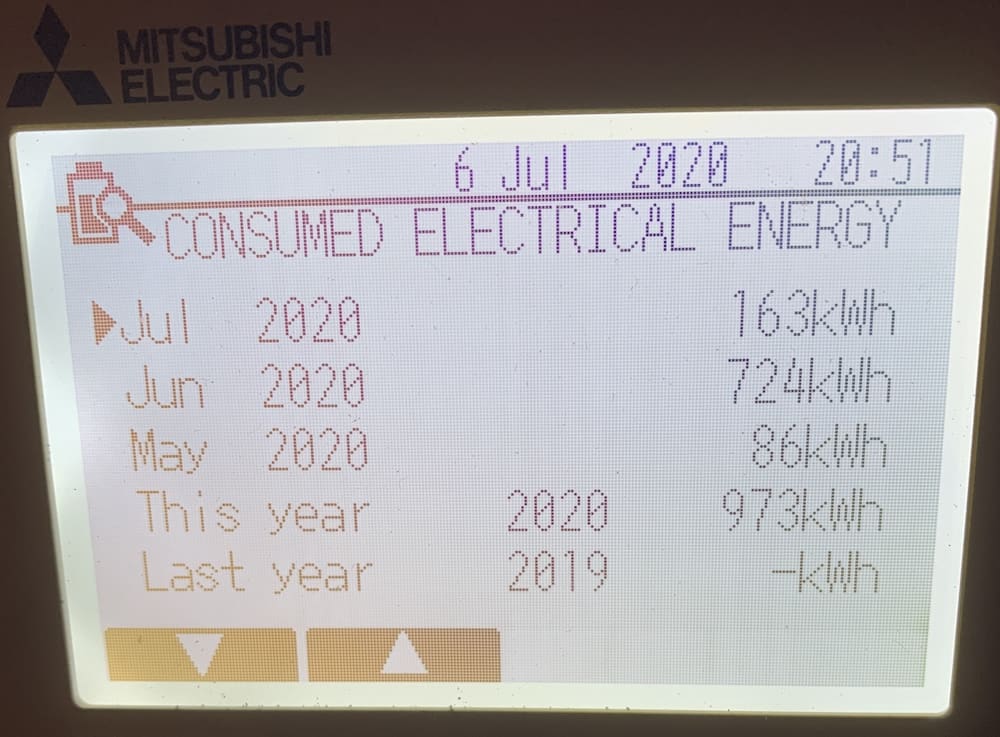Price Comparison of Electricity and Gas
06 June 2020
We have now had our first full month with the new heat-pump based heating system. In this post, I will compare the raw numbers for heating/living with a combination of electricity and gas (June 2019), and electricity-only (June 2020).
June 2019 - Gas & Electricity
In 2019, our house was heated with a gas powered central heating system, with radiators in each of the rooms. Gas was also used to heat the domestic hot water (showers, baths, etc) using a Rennai instant hot water boiler.
| Gas usage - June 2019 | Energy | Cost |
|---|---|---|
| Gas consumed | 2866 kWh | |
| Variable charges | $159.19 | |
| Daily charge (30 days) | $55.20 | |
| Sub total | $214.39 |
We used some electricity to power the lighting, cooking, appliances, and for charging our electric car. Much of the day time electricity usage is suplemented with a 5 kW array of solar PV panels on the roof.
| Electricity usage - June 2019 | Energy | Cost |
|---|---|---|
| Electricity consumed | 424 kWh | |
| Variable charges | $115 | |
| Daily charge (30 days) | $10 | |
| Sub total | $125 |
| Combined total | $340 |
|---|
June 2020 - Electricity only
With the installation of our heat-pump based heating and domestic hot water system, we no longer use gas. In fact, the gas company have disconnected the property by capping the pipe, and removing the meter.
| Electricity usage - June 2020 | Energy | Cost |
|---|---|---|
| Electricity consumed | 1187 kWh | |
| Variable charges | $322 | |
| Daily charge (30 days) | $10 | |
| Sub total | $332 |
Discussion
- The energy costs are fairly similar. I had been worried that the theorical energy efficiency of the heat-pump based system might be a little optimistic. Instead, it has been accurate at 324%
- June is the month with the least amount of sunlight. I would expect the contribution the solar panels make should increase from now onwards.
- The month of June 2020 has been particularly poor for sunshine hours (and hence solar PV generation) in Wellington. We have had a very wet and dull June. ☹️
- As the amount of electricity generated by the solar PV grows, the heating of both the house, and the domestic hot water should increasingly come from free sunlight. Obviously this statement will need to be confirmed.

Summary
We are very happy with this heating solution.
Our main goal was to eliminate the considerable carbon emissions emitted from burning natural gas. In the month of June 2019, the quantity of gas was 253 cubic meters. This translates into 558 kg of CO
This change is not a one-off gain, but is an ongoing reduction in the burden that we place on our planet.
Related posts
- My Tesla Powerwall Experience
- Review of the Mitsubushi Ecodan
- All about solar panels
- Four years of household energy costs and emissions
- Comparison of fossil-fuel with electric-only energy costs for spring
- Household energy costs comparison for winter
- Energy efficiency after 1 week
- Conversion of gas central heating to electric
- Recording our carbon footprint at home
- Please don’t wait for the Politicians